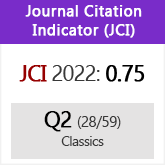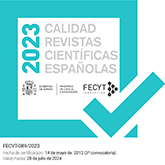La magnitud de los elefantes indios en las batallas de Rafia (Polibio V 84.5-6) y de Magnesia (Livio XXXVII 39.13) ¿Dónde está el error?
DOI:
https://doi.org/10.3989/emerita.2020.01.1940Palabras clave:
elefantes indios, elefantes africanos, μέγεθος, magnitudo, oposición privativaResumen
Hasta la colonización de África, ha estado vigente la opinión de que los elefantes indios de Antíoco III, que derrotaron a los libios de Ptolomeo IV en la batalla de Rafia (217 a. C.) descrita por Polibio, eran de tamaño superior. Tito Livio lo confirma a propósito de la batalla de Magnesia (190 a. C.). Sin embargo, el empleo de μέγεθος sugiere un significado diferente de magnitudo, de manera que el error atribuido a Polibio no es tal. Mientras el historiador romano se atiene a la idea de la corpulencia individual de una y otra especie de elefantes, el griego tiene en cuenta la magnitud del conjunto de la unidad táctica. La clave interpretativa está en el doble valor del término no marcado de la oposición privativa que forman μέγεθος y πλῆθος, magnitudo y multitudo; pues los dos primeros vocablos representan, además del tamaño individual específico, el concepto genérico de magnitud.
Descargas
Citas
Bailly, A. 2000: Dictionnaire grec français, París, Hachette.
Balasch Recort, M. 1981: Polibio. Historias, libros V-XV. Introducción, traducción y notas, Madrid, Gredos.
Berrey, M. 2017: Hellenistic Science at Court, Berlín y Boston, W. de Gruyter. https://doi.org/10.1515/9783110541939
Brandt, A. L. et al. 2014: «The Elephants of Gash-Barka, Eritrea: Nuclear and Mitochondrial Genetic Patterns», Journal of Heredity 105:1, pp. 82-90. https://doi.org/10.1093/jhered/est078 PMid:24285829
Casson, L. 1993: «Ptolemy II and the Hunting of African Elephants», Transactions and Proceedings of the American Philological Association 123, pp. 247-260. https://doi.org/10.2307/284331
Casson, L. 1993: «A Petrie Papyrus and the Battle of Raphia», Bulletin of the American Society of Papyrologists 30, pp. 87-92.
Charles, M. B. 2007: «Elephants at Raphia. Reinterpreting Polybius 5.84-85», Classical Quartertly 57, pp. 306-311. https://doi.org/10.1017/S0009838807000341
Charles, M. B. 2008: «African Forest Elephants and Turrets in the Ancient World», Phoenix 62, pp. 338-362.
Charles, M. B. 2016: «Elephant Size in Antiquity: DNA Evidence and the Battle of Raphia», Historia 65:1, pp. 53-65.
Cobb, M. 2016: «The Decline of Ptolemaic Elephant Hunting: Analysis of the Contributory Factors», Greece and Rome 63, pp. 192-204. https://doi.org/10.1017/S0017383516000061
Foucault, J. A. de 1972: Recherches sur la langue et le style de Polybe, París, Les Belles Lettres.
García-Hernández, B. 2005: «La estructura de oposición privativa y la dialéctica de Hegel», en Calboli, G. (ed.), Papers on Grammar IX 1-2. Proceedings of the Twelfth International Colloquium on Latin Linguistics, Roma, Herder, vol. I, pp. 245-255. https://doi.org/10.1515/joll.2005.9.1.245
García-Hernández, B., en prensa: «La evolución significativa de los correlativos tantus y tam magnus y su continuidad en español», en Penas Ibáñez, A. (ed.), Sémantique de la locution, de la phrase, de l'énoncé / Semántica de la frase, de la oración y del enunciado, Bulletin Hispanique 123.
Gowers, W. 1948: «African Elephants and Ancient Authors», African Affairs 47, pp. 173-180. https://doi.org/10.1093/oxfordjournals.afraf.a093647
Grubb P. et al. 2000: «Living African Elephants Belong to Two Species: Loxodonta africana (Blumenbach, 1797) and Loxodonta cyclotis (Matschie, 1900)», Elephant, 2:4, pp. 1-4. https://doi.org/10.22237/elephant/1521732169
Liddell, H. G. y Scott, R. 1996: A Greek-English Lexikon, Óxford, Clarendon Press.
Löfstedt, E. 1911: Philologischer Kommentar zur Peregrinatio Aetheriae, Upsala, Almqvist y Wiksell.
Mauersberger, A. et al. 2006: Polybios-Lexikon. Berlín, Akademie Verlag.
OGIS: Wilhelm Dittenberger 1903: Orientis Graeci inscriptiones selectae, vol. prius, Leipzig, Hirzel.
Paton, W. R. 1954: Polybius. The Histories, vol. III. Cambridge Mass., Harvard University Press.
Pédech, P. 1977: Polybe. Histoires, livre V. Texte établi et traduit, París, Les Belles Lettres.
Reinach, S. 1881: «Elephas», en Daremberg, C. y Saglio, E., Dictionnaire des antiquités grecques et romaines, París, Hachette, s. v., pp. 536-544.
Roca, A. L. et al. 2005: «Cytonuclear Genomic Dissociation in African Elephant Species», Nature Genetics 37:1, pp. 96-100. https://doi.org/10.1038/ng1485 PMid:15592471
Sancho Royo, A. 2008: Polibio, Historias, libros V-VI. Texto revisado y traducido con introducción y notas, Madrid, CSIC y Tirant lo Blanch.
Schneider, P. 2009: «De l'Hydaspe à Raphia: rois, éléphants et propagande d'Alexandre le Grand à Ptolémée IV», Chronique d'Égypte 84, pp. 310-334. https://doi.org/10.1484/J.CDE.3.15
Scullard, H. H. 1995: The Elephant in the Greek and Roman world, Cambridge, Thames and Hudson.
Taboada Hernán, G. H. 1995: «Polibio (5.84.5 s.) y los elefantes de Rafia», Habis 26, pp. 113-117.
Tarn, W. W. 1926: «Polybius and a Literary Commonplace», Classical Quaterly 20, pp. 98-100. https://doi.org/10.1017/S0009838800050345
TLL 1900 ss.: Thesaurus linguae latinae, Leipzig, Teubner / Berlín, De Gruyter.
Toynbee, J. M. C. 1982: Animals in Roman Life and Art, Ithaca NY, Cornell University Press.
Walbank, F. W. 1957: A Historical Commentary on Polybius, vol I, Óxford, Clarendon Press.
Weil, R. 1982: Polybe. Histoires, livres VII-VIII et IX. Texte établi et traduit, París, Les Belles Lettres.
Descargas
Publicado
Cómo citar
Número
Sección
Licencia
Derechos de autor 2020 Consejo Superior de Investigaciones Científicas (CSIC)

Esta obra está bajo una licencia internacional Creative Commons Atribución 4.0.
© CSIC. Los originales publicados en las ediciones impresa y electrónica de esta Revista son propiedad del Consejo Superior de Investigaciones Científicas, siendo necesario citar la procedencia en cualquier reproducción parcial o total.Salvo indicación contraria, todos los contenidos de la edición electrónica se distribuyen bajo una licencia de uso y distribución “Creative Commons Reconocimiento 4.0 Internacional ” (CC BY 4.0). Puede consultar desde aquí la versión informativa y el texto legal de la licencia. Esta circunstancia ha de hacerse constar expresamente de esta forma cuando sea necesario.
No se autoriza el depósito en repositorios, páginas web personales o similares de cualquier otra versión distinta a la publicada por el editor.














